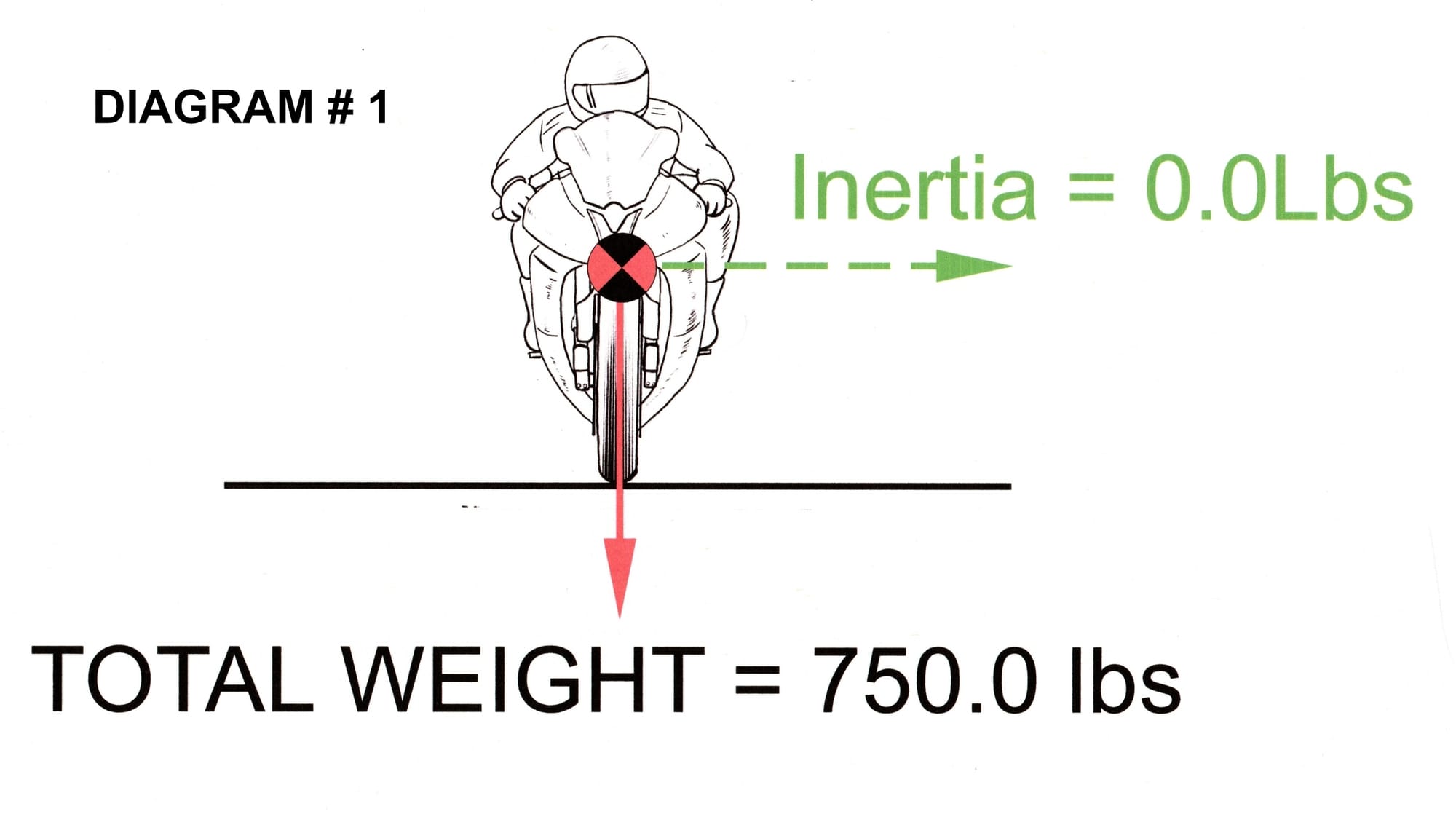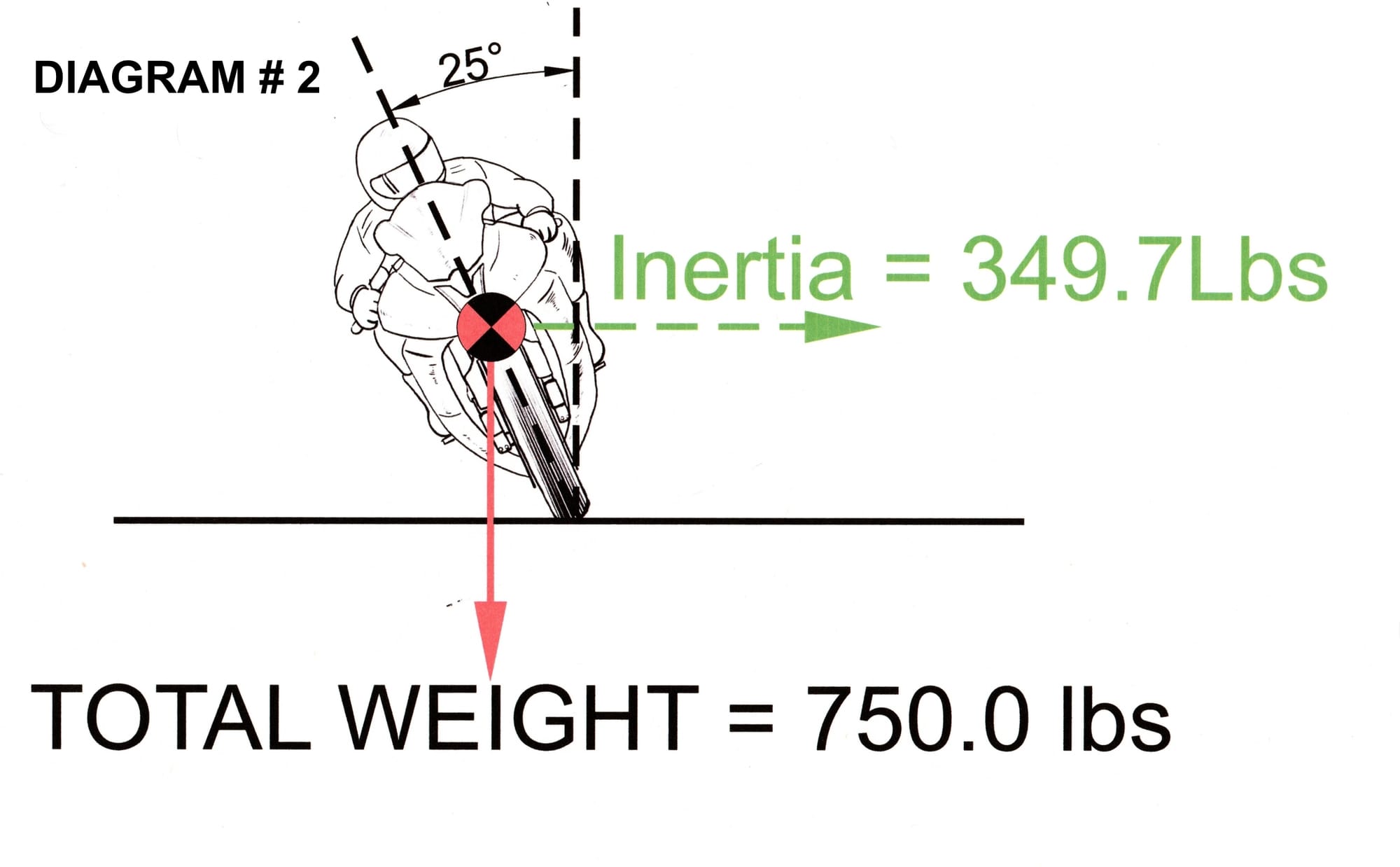Total Weight on wheels VS Lean Angle

Total weight on wheels verses Lean Angles
Once again the social media is flooded with myths and misinformation. One of my pet peeves is the myth,
“More aggressive BP will reduce cornering forces and leave more traction for additional braking or more throttle.”
This is a total myth because, the truth of the matter is that cornering forces are generated from,
- Speed
- Radius of the turn
BP will not change the cornering forces or inertia of the corner.
Here are some simple diagrams showing the forces acting on the bike in several situations.
In diagram #1 we see,
- The rider is in a standard riding position.
- A bike & rider are traveling in a straight line.
- The total weight of bike & rider is 750 lbs.
- There are no cornering forces (Inertia) being generated. (Green Arrow)
- Notice the pull of gravity is straight down (Red Arrow)

In Diagram # 2 we see,
- The rider is still in a standard riding position.
- The bike is leaned over 25°.
- This equivalent to a speed of 37.2MPH on a 200ft radius turn.
- Notice the total weight of 750lbs is still being pulled straight down by gravity.
- The resulting cornering force is 349.7lbs, or about 0.466g.

This bike & rider are well within the traction level of most tires, on dry pavement. In this situation using any BP would have no performance effect whatsoever. Now the rider may derive a sense of better comfort with some minimum BP applied. But from a strictly “Performance Point of View,” there is no need for BP, let alone overaggressive BP.
In diagram # 3 we see,
- A rider in a standard riding position.
- The bike is leaned over to 45°
- This would be equivalent to 54.4 mph in a 200 foot radius turn.
- Once again notice the pull of gravity is still straight down.
- The resulting inertia is now 750lbs. or 1.0g

Laws of physics says, the gravity will always pull straight down, regardless of speed. Cornering just adds a second force to the dynamic. The total weight on the tires remains at 750lbs. If the rider’s tire had a coefficient of friction of 1.0g the cornering forces are using up all of the available traction. The rider is now going as fast as he can in that turn. If he tries to go any faster the inertia would be stronger than the traction and the tire will start to slide.
In Diagram # 4 we see,
- The rider as taken the Full Moto GP posture.
- This rider is still in a 200ft radius turn at the same 54.4mph, as in diagram #3.
- The chassis of the bike has straightened up to 41°from of 45°
- The resulting cornering inertia is still 750.0lbs.
- The aggressive BP has not changed the cornering force.
- The total weight on the tires has not changed from the change in BP.

Even though the rider as changed his BP, the inertia is using up all of the available traction of the tires that have a coefficient of friction 1.0g. The rider can not go any faster without the tire starting to slide.
The only thing that BP does is reduce the lean angle. Which will increase the amount of ground clearance. But to go any faster the rider will need better tires.
Rule #1
“There is no MAGIC way to sit on your bike to get more traction!”
BP in and of itself will not change the total weight on the tires. With the total weight on the tire unchanged the size of the contact patch will remain unchanged. So, the statement that “Standing the bike up with BP will increase the contact patch,” is another Myth!